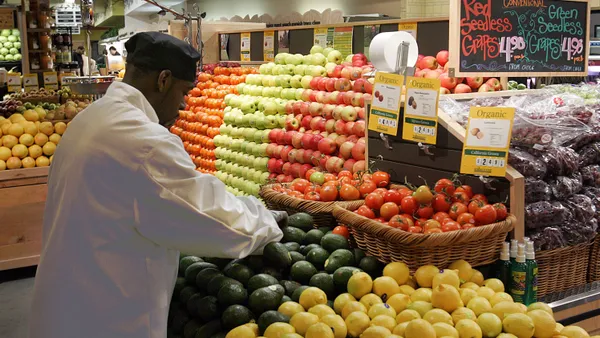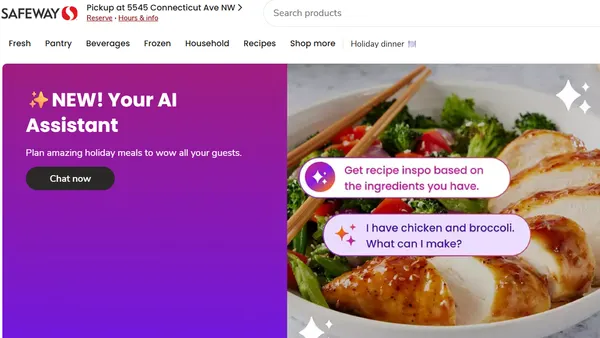Dive Brief:
- As more companies begin to pilot driverless grocery delivery, shoppers are beginning to find what works well and what doesn’t when using such services, according to the San Francisco Chronicle. Some shoppers, for example, dislike walking out to the delivery vehicle to retrieve their groceries, which they then have to take into their homes themselves.
- With startups such as Udelv, Nuro and AutoX piloting autonomous last-mile delivery partnerships with grocers, deliveries are likely to be the first commercial use of autonomous vehicles. Robot deliveries offer precise delivery times, save people trips to the grocery store and don’t require any tipping. They also reduce labor costs.
- Early stage delivery vehicles come in different shapes and sizes, with most operating at slow speeds of around 25 miles per hour. Nuro is testing driverless Toyota Priuses for Kroger grocery delivery in Arizona. Udelv has bright orange vans on the road, which it uses for grocery deliveries for Draeger’s Market in San Francisco and grocery startup Farmstead. Walmart and Postmates are working together on a driverless delivery project with Ford Motor Co. in Florida, and AutoX has five yellow and green Lincoln MKZs that offer delivery through the organic e-grocer GrubMarket in California.
Dive Insight:
There has been a recent rush of companies launching driverless deliveries and partnering with retailers, possibly motivated by Amazon, which filed a patent for an autonomous delivery vehicle early this year.
Given the continued rise of online purchasing, which requires the delivery of goods, experts appear confident that there is a clear role for driverless delivery in the grocery industry, and that the benefits far outweigh the inconveniences. While some customers may not like curbside pickup at home or carrying their own heavy grocery loads, the Chronicle says that four-fifths of consumers have an appetite for delivery.
Additionally, driverless delivery carries the promise of lower delivery fees — something for which most customers will be willing to walk to the end of their driveways. For this and other reasons, professional services firm KPMG estimates that driverless delivery vehicles could log as many as 78 million miles a year by 2040.
Kroger is among the high-profile grocers piloting driverless delivery so far. The company began a pilot project with Nuro at a Fry’s grocery store in Scottsdale, Arizona, earlier this summer that offers delivery for a flat $5.95 fee. The vehicles are being monitored with drivers in place during the pilot program. Several grocery stores in underserved areas of Oklahoma City will also be experiencing driverless delivery courtesy of Udelv, which recently signed a new deal with an Oklahoma company in addition to its partnerships in San Francisco.
While there are concerns among the public about self-driving cars that would transport people, there’s less of a safety issue with robot cars for delivery. Obviously, it is less risky to transport cargo than people, and delivery vehicles are going shorter distances at slower speeds. Given the mutual interest of automakers, retailers and tech startups, it is highly likely that this technology will spread far and wide, especially given estimates that 80% of parcels could be delivered autonomously by 2025, according to McKinsey. The biggest challenge for driverless delivery vehicles will likely be walkable urban areas, where pedestrians are common and curbs are crowded.
There are a few hurdles to clear before the industry will see driverless delivery expand. First, companies building the cars have to convince regulators that the cars are capable without having drivers on board in case of a glitch. There also has to be wider adoption among retailers, and it has to become a cost-effective tool for them. Manufacturers also have to refine vehicle design to ensure products are stored well and space is utilized efficiently.
Retailers have a lot to gain from driverless technology, especially because it will lower labor costs. As the technology advances, they should also have a wider reach with more vehicles being able to make more deliveries in a predictable and timely manner. But there could also be risks, including the possibility of injuries to pedestrians from vehicles or costs to repair and maintain vehicles. Ultimately, while these pilot programs are rolling more out slowly than some would like, proceeding cautiously is the right move.









